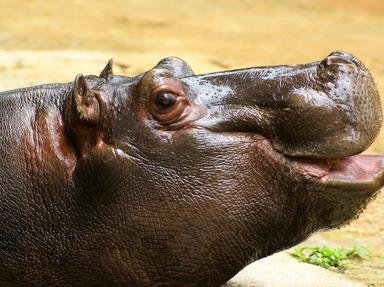Quiz Answer Key and Fun Facts
1. From the outside, ducks and cats can be easily distinguished utilizing simple inspection. But suppose you are on the inside, about to be swallowed by one? As you peer through the darkness, what would be missing from a duck's mouth that you would find in the mouth of a cat?
2. Sure, it's simple to tell ducks from cats if you resort to examination of an entire specimen. But suppose you had to rely on an inspection of only the eyes to distinguish between a duck and a cat. All BUT which of the following distinguishes the duck eye from the cat eye?
3. You contemplate differentiating between a duck and a cat based on comparing the number of toes on a pair of feet and the presence or absence of claws on the hind feet. Which approach would work?
4. Now you have only one cell from each animal. Assuming it is performed accurately, would a simple chromosome count allow you to tell the cat cell from the duck cell?
5. You should be able to tell a "quack" from a "meow" pretty easily. But will a harder way work? A duck and a cat are placed in separate but identical caves and stimulated to emit a "quack" and a "meow", respectively. Can you identify which animal is which from whether or not the sound produces an echo?
6. One can resort to behavioral differences to distinguish between ducks and cats. A hungry duck and cat are placed in separate rooms. Each room contains a bowl with a small fish and a small pile of grain. When the animals are removed, how can one tell which animal was in which room?
7. Behavioral differences may also be used to distinguish between kittens and domesticated ducklings. Which of the following is a behavior a duckling is more likely to exhibit than a kitten?
8. You might even be able to distinguish between a duck and a cat using a historic photograph. You examine a photograph of the first passengers to be sent up in a hot air balloon and look for an animal that matches one of the two. Would this be an effective strategy? (Hint: all passengers returned intact.)
9. Can you usually distinguish between a duck and a cat based on an attempt at housebreaking the two animals?
10. If you are very patient, you can determine which of a pair of animals is the duckling and which the kitten. Which will very likely grow old and die first?
Source: Author
uglybird
This quiz was reviewed by FunTrivia editor
crisw before going online.
Any errors found in FunTrivia content are routinely corrected through our feedback system.


